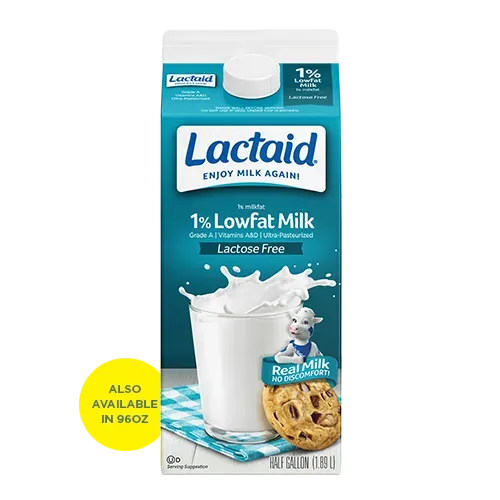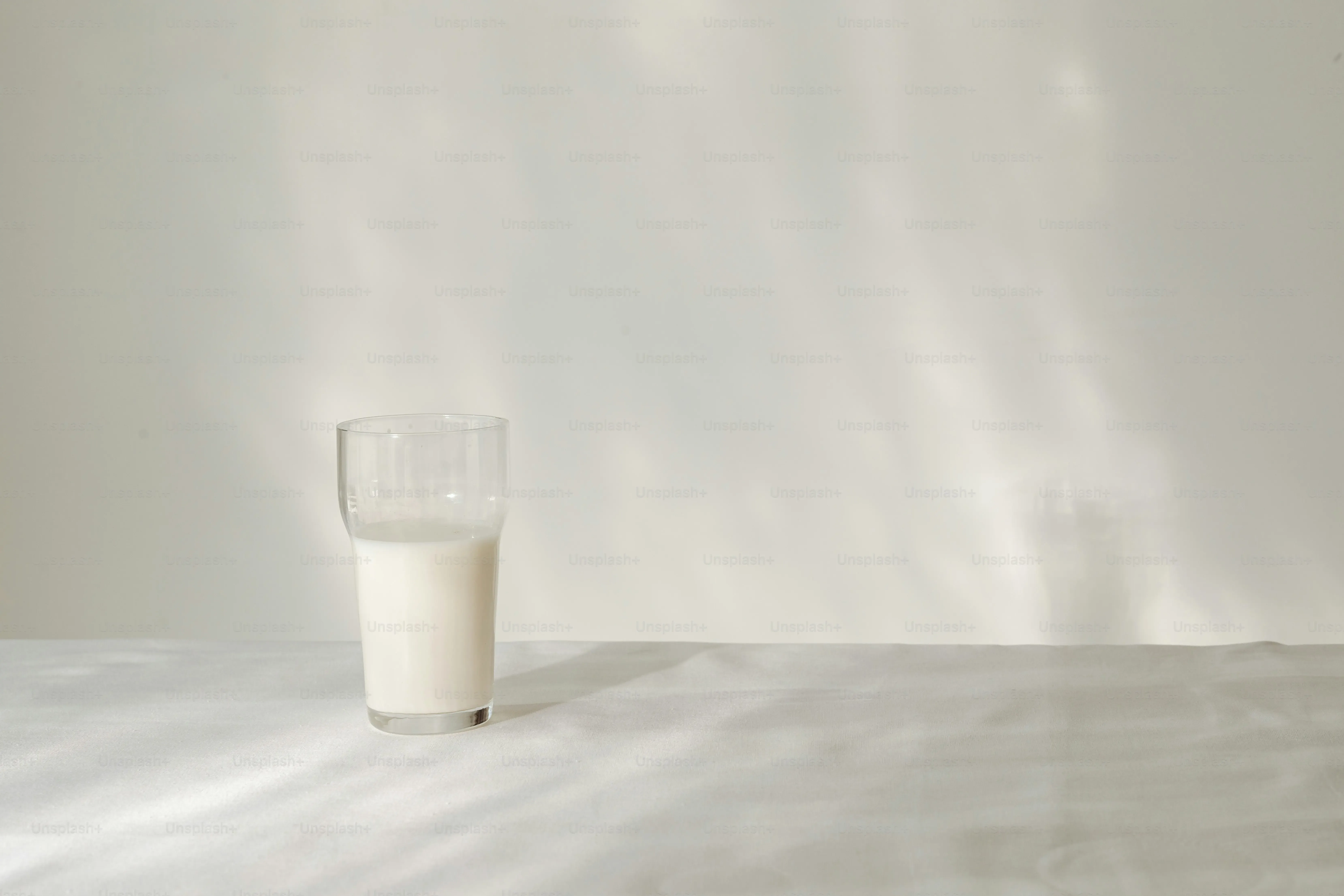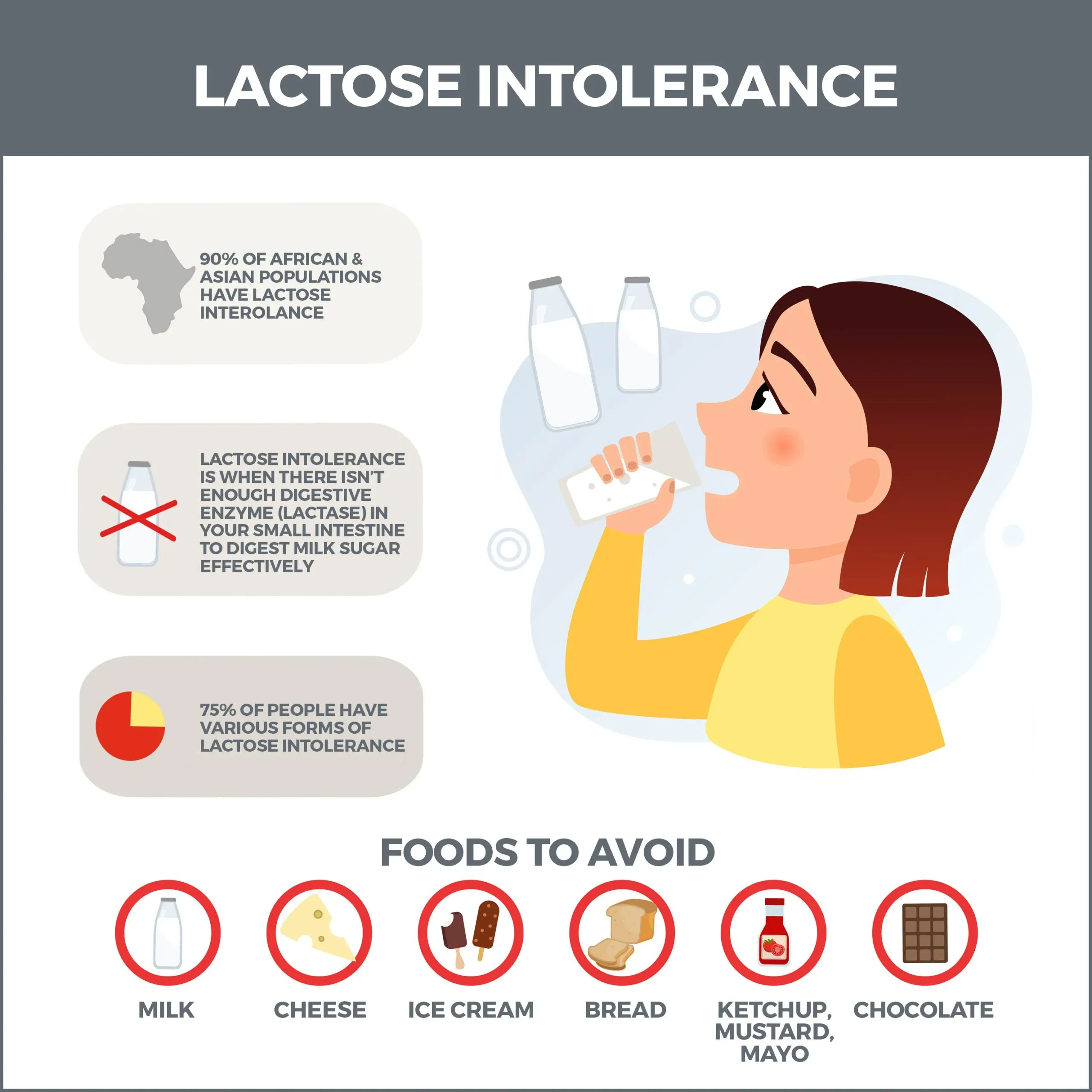Table of Contents
If you're dealing with lactose intolerance, you've probably tried everything to enjoy dairy without the consequences. Maybe you've heard that switching to low fat milk might make things easier. It seems logical, right? Less fat, maybe less digestive trouble? But the reality of low fat milk lactose intolerance isn't quite what many people assume.
The Truth About Low Fat Milk and Lactose Intolerance

The Truth About Low Fat Milk and Lactose Intolerance
Does Less Fat Mean Less Lactose Trouble?
Let's cut to the chase about low fat milk lactose intolerance. Many people who struggle with digesting dairy figure that if they just switch to a lower-fat version, maybe 1% or even skim milk, their symptoms will magically disappear or at least lessen. The thinking goes something like, "Maybe the fat makes it harder to digest everything, so less fat is better." It's a logical leap, sure, but unfortunately, it completely misses the actual problem.
The issue isn't the fat. It never was. Lactose intolerance is about your body's inability to properly break down lactose, which is a sugar found in milk. Your digestive system needs an enzyme called lactase to split lactose into two simpler sugars, glucose and galactose, which your body can then absorb. If you don't produce enough lactase, that lactose just sits in your gut, ferments, and causes all sorts of unpleasantness.
The Real Culprit: Lack of Lactase, Not Fat
Think of it this way: lactose is dissolved in the watery part of the milk, not the fat part. Skimming off the fat removes, well, fat. It doesn't remove the lactose sugar that's floating around in the liquid. So, whether you're drinking whole milk, 2%, 1%, or skim, the amount of lactose sugar in a standard serving remains pretty consistent across the board. Your body still encounters roughly the same amount of undigested sugar causing the trouble, regardless of how much fat is along for the ride.
In fact, some anecdotal evidence and even some older studies hinted that full-fat milk might *lessen* symptoms slightly. The theory was that fat slows down digestion, meaning the lactose moves through your system more slowly, giving any limited lactase you *do* have a tiny bit more time to work. But even if this effect is real for some people, it's usually minimal and doesn't solve the core problem. Relying on fat content to fix lactose intolerance is like hoping a slower car ride will somehow make a flat tire fix itself.
- Lactose Intolerance Explained Simply:
- It's about a sugar (lactose) in milk.
- Your body lacks the enzyme (lactase) to break it down.
- Undigested lactose causes gas, bloating, and other symptoms.
- Fat content doesn't change the amount of lactose.
Why Low Fat Milk Won't Be Your Savior
So, to be perfectly clear: focusing on low fat milk to manage lactose intolerance is a dead end. The amount of fat in the milk has no significant impact on the amount of lactose present, which is the actual source of your discomfort. Swapping your whole milk for skim isn't going to magically give you the lactase enzyme your body is missing. You'll likely experience the same symptoms, just maybe with fewer calories from fat.
Understanding The Truth About Low Fat Milk and Lactose Intolerance is the first step to finding real solutions. Instead of fixating on the fat content, you need to address the lactose itself. This might involve choosing lactose-free products, using lactase enzyme supplements, or exploring dairy alternatives. Chasing low fat milk is just a distraction from the real strategies that actually provide relief.
Why Fat Content Doesn't Fix Lactose Intolerance Symptoms
It's About the Sugar, Not the Creaminess
so you're asking why exactly focusing on fat content is a dead end when it comes to managing lactose intolerance symptoms? It boils down to understanding where the problem lies. Lactose, the sugar causing all the trouble, is dissolved in the water component of milk. The fat is a separate element, suspended in tiny droplets. When you process milk to make it low fat or skim, you're primarily removing those fat droplets. You aren't filtering out the dissolved lactose sugar. So, a glass of skim milk has roughly the same amount of lactose as a glass of whole milk of the same volume. Your body still gets hit with that load of undigested sugar, leading to the familiar bloating, gas, and discomfort. The idea that fat slows digestion enough to make a significant difference for most people with lactose intolerance just doesn't hold up under scrutiny; studies, like one published in the European Journal of Clinical Nutrition, have shown the effect on symptoms is negligible regardless of fat level.
- Key takeaway: Fat content doesn't change lactose amount.
- Lactose is in the water, fat is separate.
- Skim milk has similar lactose levels to whole milk.
- Digestive speed difference from fat is minimal for symptoms.
Beyond Low Fat: Real Ways to Handle Lactose Intolerance

Beyond Low Fat: Real Ways to Handle Lactose Intolerance
Embracing Lactose-Free Products
Alright, so we've established that stressing over low fat milk lactose intolerance is a bit of a wild goose chase. The real battle is with the lactose itself. One of the most straightforward ways to keep dairy in your life without the fireworks is to simply choose lactose-free versions of your favorite products. These aren't some strange chemical concoctions; they're usually just regular milk, cheese, or yogurt where the manufacturer has already added the lactase enzyme for you. That enzyme breaks down the lactose before it even hits your gut, doing the work your body can't.
Think of it as pre-digested dairy, specifically for the lactose part. You get all the calcium, vitamin D, and protein of regular milk, just without the sugar that causes you grief. Most major dairy brands now offer a full line of lactose-free options, from skim to whole milk, ice cream, and cottage cheese. It's widely available and tastes remarkably similar to the real deal, making it an easy swap for most recipes and morning cereal routines. It's a direct hit on the problem, bypassing the whole fat debate entirely.
Leveraging Lactase Enzyme Supplements
Another powerful tool in your arsenal, moving well beyond concerns about low fat milk lactose intolerance, is using lactase enzyme supplements. These are those little pills or drops you can take right before you consume dairy. They contain the very enzyme your body is short on. When the supplement hits your stomach along with the dairy, it gets to work breaking down the lactose in the food before it reaches your large intestine where all the fermentation and gas happen.
The effectiveness can vary depending on the dosage and the individual, but for many, these supplements are a game-changer. They offer flexibility; you can enjoy a slice of pizza at a friend's house or a scoop of regular ice cream on vacation without having to strictly stick to lactose-free items. It requires a bit of planning – you need to have them with you – but it opens up a lot more dietary freedom than just sticking to low-fat options ever could. Consider it your personal lactose-busting sidekick.
- Ways to Use Lactase Supplements:
- Take just before eating or drinking dairy.
- Available as pills, capsules, or drops.
- Dosage may need adjustment based on dairy amount.
- Check product instructions for timing and amount.
- Offer flexibility for occasional dairy consumption.
Exploring Alternatives and Fermented Dairy
If lactose-free products or supplements aren't quite cutting it, or if you're looking to diversify, there's a whole world of dairy alternatives and naturally lower-lactose dairy items. Plant-based milks – almond, soy, oat, cashew, coconut, rice – offer vast options for drinking, cooking, and baking, and they contain zero lactose. They have different nutritional profiles and tastes, so you can experiment to find your favorites. This completely sidesteps the issue of low fat milk lactose intolerance because there's no lactose involved at all.
Additionally, some dairy products are naturally lower in lactose due to processing. Hard cheeses like cheddar, Parmesan, and Swiss contain very little lactose because most of it is removed during the curdling and aging process. Butter also has minimal lactose. Yogurt and kefir, especially those with live and active cultures, can be easier to digest for some people because the bacteria in them help break down some of the lactose. It's not a free pass for everyone, but many find they can tolerate these in moderation. It pays to know which dairy items are inherently less problematic.
Finding Dairy That Works: Not All Milk is Equal for Lactose Intolerance

Finding Dairy That Works: Not All Milk is Equal for Lactose Intolerance
Naturally Lower Lactose Dairy Options Exist
so we've hammered home that fixating on low fat milk lactose intolerance is beside the point. The real magic lies in understanding that not all dairy products are created equal when it comes to lactose content. While liquid milk, regardless of fat percentage, remains a high-lactose offender, many other items in the dairy aisle have significantly less of the troublesome sugar. Think hard cheeses, for starters. As cheese ages and goes through the curdling process, the whey (which contains most of the lactose) is drained off, and the remaining lactose is further broken down during aging. A sharp cheddar, a block of Parmesan, or a slice of Swiss cheese often contains only trace amounts of lactose, far less than a glass of milk.
Butter is another surprisingly low-lactose product. It's mostly fat, with very little of the watery part of milk where the lactose hangs out. So, a pat of butter on your toast is unlikely to cause issues for most people with lactose intolerance. These items offer a way to enjoy some dairy flavor and texture without the full lactose load, proving that "dairy" isn't a single, monolithic enemy for everyone.
Fermented and Cultured Dairy Can Be Different
Beyond aged cheeses and butter, fermented dairy products like yogurt and kefir often get a pass from some individuals with lactose intolerance. This isn't a guaranteed free ride for everyone, but it's worth exploring. The live and active cultures added to yogurt and kefir help to break down some of the lactose during the fermentation process. By the time you spoon that yogurt into your bowl, a portion of the lactose has already been pre-digested by the beneficial bacteria.
While they still contain some lactose, the reduced amount, coupled with the presence of the helpful bacteria, means many people who can't handle a glass of milk can tolerate yogurt or kefir in moderation. Look for products specifically labeled as containing "live and active cultures" for the best chance of this benefit. Experimenting cautiously with small amounts of these types of dairy can help you discover what your personal tolerance level might be, moving you further away from the dead-end focus on low fat milk lactose intolerance and towards practical, livable solutions.
- Dairy often better tolerated by lactose intolerant individuals:
- Hard, aged cheeses (Cheddar, Parmesan, Swiss)
- Butter
- Yogurt with live and active cultures
- Kefir with live and active cultures
- Lactose-free versions of milk, ice cream, etc.
Putting the Fat Myth to Rest for Lactose Intolerance
So, let's be clear: focusing on whether your milk is low fat or full fat isn't your golden ticket out of lactose intolerance symptoms. The science, frankly, doesn't back that up. Lactose is the problem child here, not the fat molecules tagging along for the ride. Chasing lower fat content hoping for digestive peace is likely a dead end. Instead of fixating on grams of fat, direct your energy toward strategies that actually tackle the lactose itself – like choosing lactose-free products or using enzyme supplements. That's where you'll find the real relief, leaving the milk fat content debate where it belongs: in the realm of irrelevant dietary details for managing this particular issue.
